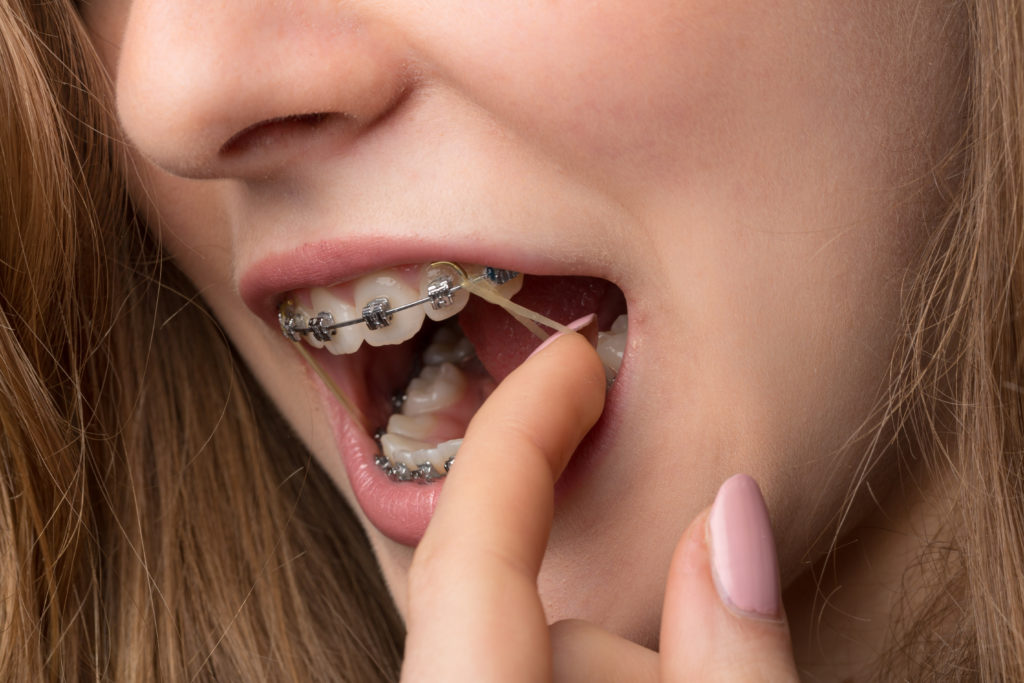
If you’re new to orthodontic treatment, you might have a lot of questions, mostly about how they work and how to care for your teeth during treatment. How long do you need to keep braces on? What can one do to clean their braces effectively? How often should you brush your teeth? And why are there rubber bands on braces?
Fortunately, the answers come easy. When you first start off with your orthodontic treatment plan, having an idea of what you’re getting into before starting can clear out a lot of things. Knowing how braces work, for instance, might be an excellent place to start.
Since your teeth anchor into the jawbone, you need to gradually ease them through orthodontic treatment to get them to the position they need to be in. A treatment plan with braces is designed to do this systematically. They make use of your body’s natural bone-building capacities to move your teeth and jaw into their ideal positions.
Two cells are heavily involved in the bone-building process:
- Osteoclasts. In the case of sustained pressure, your body signals these cells to dissolve parts of the bone at the point of tension. This is to prevent potential fractures.
- Osteoblasts. These cells are what provide your bones with minerals to help them rebuild.
How braces work, then, is to use this mechanism to your advantage. They, too, place sustained pressure on your teeth to trigger this bone-building process. However, they direct the tension, so your teeth can move through the jawbone accordingly.
During orthodontic treatment, orthodontists place brackets on your teeth. They then string a wire through it and tighten it depending on how much pressure the teeth require to shift.
While this all sounds run-of-the-mill, there’s still one question left unanswered. If your brackets and wires fix your teeth, why are there rubber bands on braces? And what do they do, exactly?
What is The Purpose of Rubber Bands on Braces?
Why are there rubber bands on braces, you might ask? As it turns out, they’re less of a fun accessory and more of a necessity. This orthodontic treatment moves your teeth and jaw into alignment. What we discussed earlier, however, only covers the former. So, how does your jaw get aligned during treatment?
That’s why there are rubber bands on braces. While the wire and brackets are what pull your teeth back on track, those small elastic bands—also called elastic ligatures—help bring your jaw into the right bite alignment. Because of this, manufacturers design elastic ligatures incredibly tight. Eventually, your jaw adapts to the movement.
This isn’t the only thing the rubber bands do. Aside from keeping your jaw in alignment, they also further tighten your braces. Overall, this benefits your orthodontic treatment.
When Do You Start Wearing Rubber Bands for Braces?
Is there a particular time when you start wearing rubber bands with braces? Not necessarily. But dentists do install them last when you first receive your treatment. In this orthodontic treatment, ligatures are the only removable part. Just be sure you replace them after every meal. You wouldn’t want the rubber band to break off your braces after all.
Concerned About How They Look? Here are Five Ways You Can Straighten Your Teeth without spoiling Your Appearance.
Choose lingual braces: Lingual braces are a type of dental braces. However, instead of being attached to the front of the teeth, lingual braces correct malocclusion through the back of the teeth.
Because of their placement, these braces are less noticeable. Unless you open your mouth wide and tilt your head backward in the process, no one will know that you are undergoing orthodontic treatment.
Opt for ceramic braces: Through the years, orthodontics has introduced improvements in dental braces to address their drawbacks, particularly regarding aesthetics.
Although more apparent than lingual braces, ceramic braces are less prominent compared to other metal braces as they adopt a tooth-colored or clear appearance.
Go clear with Invisalign: Another development in orthodontics that those who dread braces will like is Invisalign. Invisalign is a computer-generated tray that is nearly transparent.
Through this technology, you straighten your teeth by wearing clear aligners which receive adjustment every two weeks or so. Since they are clear, they don’t appear in photos.
Another characteristic of Invisalign that may appeal to some is its removability. You can take the appliance off when eating, brushing, etc., as long as you keep it on for a certain period of time.
Embrace your braces! If none of those options appeal to you, why don’t you just make the best out of your dental braces? You can enjoy the experience and experiment with dental elastic colors to “decorate” your teeth. Brackets are also available in gold.
